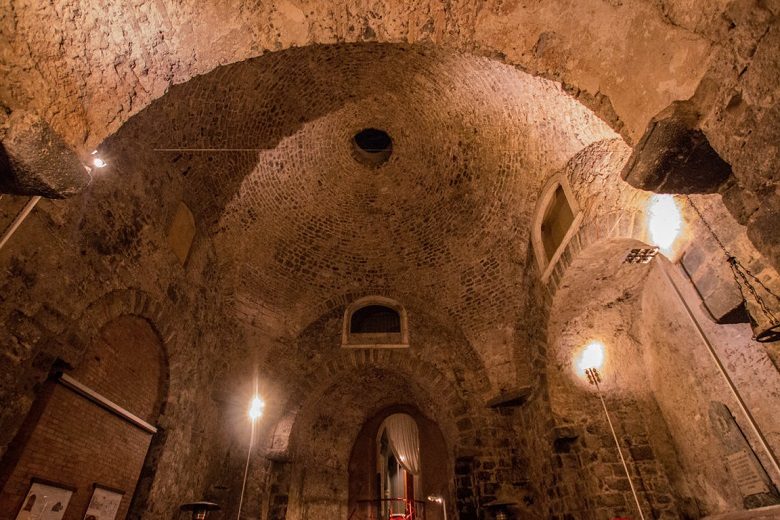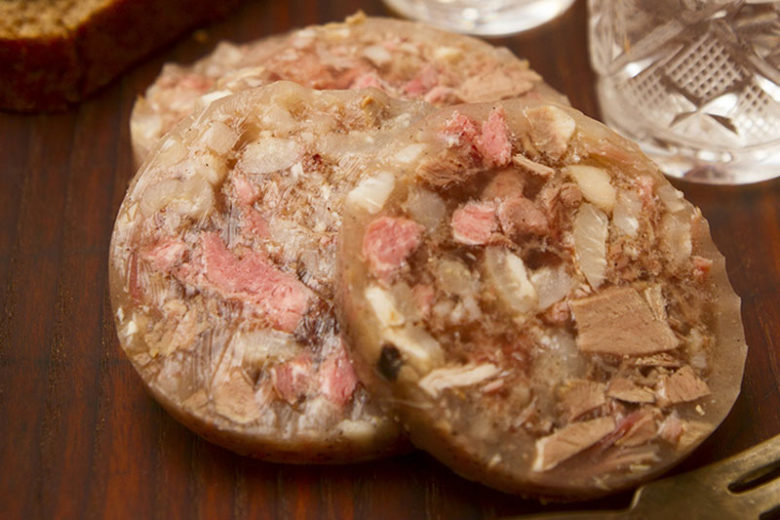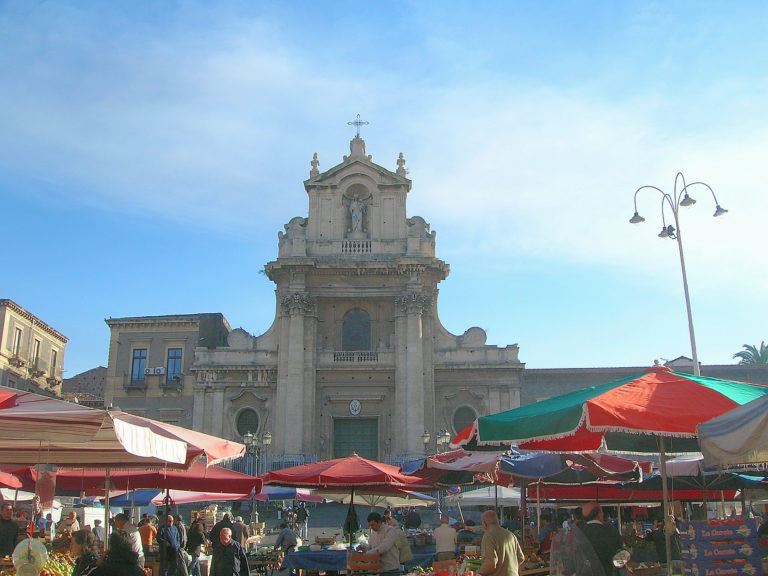Catania: Piazza Carlo Alberto between the “Fera o’ luni” and the oldest catacombs in town
Beyond the cries of traders and the crowd of people, the so-called ‘caves’ are hidden within the Church of St. Gaetano, where once martyrs such as Saint Agatha were buried
Piazza Carlo Alberto has long been the stage of one of the largest city markets in Sicily. Situated in the town-center of Catania, it is a varied place where intense and genuine scents, bright colors and products sold out loud by merchants live together. The citizens’ excitement while trying to grab the best product still leaves tourists astonished and glad to enjoy the show at the same time. Through an endless slalom among the watchers’ legs, children play with what sometimes falls from the stalls, without any of them thinking about what they are trampling on. In fact, the oldest catacombs of the city are hidden just under the hustle and bustle of this square.
THE CAVES ALMOST NOBODY KNOWS. The Fera o’ luni (Monday Fair), as it is called by the elderly locals, takes place daily under the mystic and austere gaze of the shrine dedicated to the Blessed Virgin Mary of the Mount Carmelo. Its majestic architectural complex overshadows a small religious building rising on the right side of Piazza Carlo Alberto: the Church of St. Gaetano alle Grotte. The word ‘grotte’ is Italian for ‘caves’, but which caves are we talking about and, above all, where are they? Those who visit the market can’t realize their position, of course, as one needs to access the church to discover a whole ancient world buried by the city traffic. In fact, in the middle of the only nave remaining from the Baroque temple there is a steep staircase leading to a very special place: a lava cave covered with works of art and furnishings.
SAINT MARY OF NAZARETH. In the second century A.D., the first Christian community of Catania took a cistern from Roman times (still visible today) and secretly made the adjacent building the main place where to bury its deceased members, especially martyrs. Agatha herself, recognized as a Saint and then become the patron of the city, should be originally buried in this place. Around the 262 A.D., one of the first churches of the city, probably the oldest, was erected inside the cave. Only after the Edict of Milan issued by the emperor Constantine in 313 A.D., this primitive church had its altar and holy furnishings, as the time of persecution was finally over. The church of Saint Mary of Nazareth, as it was originally called, became one of the first in Europe to be dedicated to the Mother of Jesus.
CONTINUOS RECOSTRUCTIONS. The several dominations occurred over time radically changed the original plan of the church, where already in the XVI century people officiated in honor of the Saint from Thiene. During the Arab domination, the building above the cave was demolished and what remained got abandoned. The church was rebuilt only around the XI century, but over the next few years it was subjected to the action of man and of natural agents, such as the earthquake in 1693, that deeply changed its structure. Nowadays it is considered almost a hindrance by those who pass by, both because they haven’t really given value to it and because locals have almost completely forgotten its history. Nevertheless, this famous “cave” is at the origin of the same civilization which has provided us the cultural bases of our time.
Translated by Daniela Marsala




